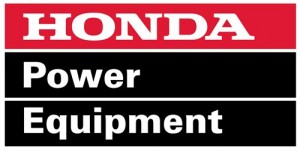 Honda’s HS520 snowblower is one of the best models on the market, with excellent durability and a proven record of lasting throughout many years of tough winter weather. This sterling reputation doesn’t come without its fair share of minor problems, mistakes or maintenance oversights, however, each of which can be fixed with an extensive troubleshooting process. If the snowblower has recently begun experiencing problems, ranging from electric starter problems to a simple inability to throw snow away from the equipment’s path, there are generally a few key things to check to get the equipment back in perfect working order.
Honda’s HS520 snowblower is one of the best models on the market, with excellent durability and a proven record of lasting throughout many years of tough winter weather. This sterling reputation doesn’t come without its fair share of minor problems, mistakes or maintenance oversights, however, each of which can be fixed with an extensive troubleshooting process. If the snowblower has recently begun experiencing problems, ranging from electric starter problems to a simple inability to throw snow away from the equipment’s path, there are generally a few key things to check to get the equipment back in perfect working order.
Safety is Important When Troubleshooting the Snowblower
No troubleshooting process should begin without paying careful attention to safety details. Perhaps the most important of these is that the snowblower has been cooled off from any recent operation, guarding against burns and even unwanted sparks that could ignite gasoline in the engine or nearby.
Maintenance work and troubleshooting should always be done in an open space where carbon monoxide poisoning is not a concern. Generally, it’s a good idea to perform maintenance on a flat, solid surface rather than a grassy or carpeted area.
Electric Starter Problems: What to Do if It Just Doesn’t Operate
The electric starter paired with the HS520 is one of the most convenient ways to get any snowblower started and rolling across a snowy landscape, but it can sometimes present problems when paired with a shoddy electrical outlet or a worn cord. If the electric starter simply doesn’t operate, be sure to check that the cord is plugged into an outlet that has full power and uses proper wiring. Old or poorly wired electrical outlets will have a hard time supplying the snowblower with enough power.
If the outlet checks out, it’s a good idea to check the electric starter’s power cord or extension cord as a second option. Cords can, from time to time, get worn out and suffer from frayed connections to either one of the plugs. If the cord does show signs of wear, and fails to start the mower when paired with different electrical outlets, consider an OEM replacement from Honda.
Engine Problems: What to Check if the Starter is Fine, But the Engine Won’t Start
One of the most common issues that affects the engine is a pretty easy oversight: Leaving the fuel valve off when attempting to turn the ignition on and use either the electric starter or the starter grip. Double-check this valve and make sure that it’s in the “on” position before continuing.
If the fuel valve is set properly, there are a number of other issues that could be at work. The spark plug could be encrusted with carbon deposits or a large gap could exist between the plug and its housing. Alternatively, old fuel may simply be too unstable to power the engine. If this is the case, drain the old fuel and add fresh gasoline before trying again.
Low Power: What to Check
Old fuel, an improperly set choke lever, or a problem with the spark plug cap, can all lead to problems with engine power. These mechanical problems are often the cause of any lower power issues, but they’re not the only ones. In fact, especially deep snow can also cause the engine to suffer from low power and occasionally turn off. So, too, can shallower snow accumulations that are just a bit wetter and more dense. Walking too quickly behind the equipment can also cause engine power problems in routine use.
When in doubt, check the mechanical causes of this problem first. If the spark plug, choke lever, and fuel status all check out, then be sure to check the whether the depth of the snow or the pace of the operator might be causing the problem instead.
Snow Problems: What to Check When Snow is Not Discharging Properly
Generally, discharge problems have something to do with the chute itself or the auger that helps push snow out of the blower. If snow is discharging slowly, or not at all, be sure to first check whether or not the discharge chute is partially or fully blocked by debris or accumulated, heavier snow. If it is, stop the equipment and clear the discharge chute.
Other things worth checking, especially if the cute is not obstructed, include the drive belt, the swath width, and the snow type, all of which might weigh on the equipment and cause it to stop discharging altogether.
For Parts and More, Visit HondaLawnParts.com
Many of the most common problems to affect the HS520 snowblower can be solved with a quick checkup of ground conditions and equipment parts. If replacement parts are needed, HondaLawnParts.com is the logical destination for every homeowner. The website has a wide range of OEM replacements and maintenance guides, making it easy to effectively clear snow all winter long.
